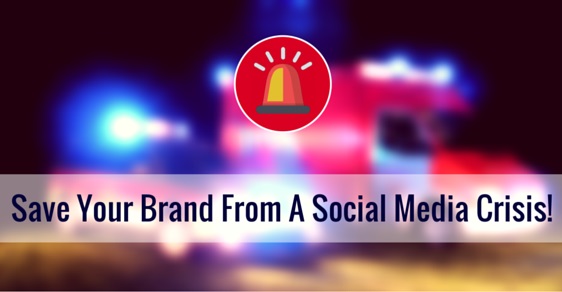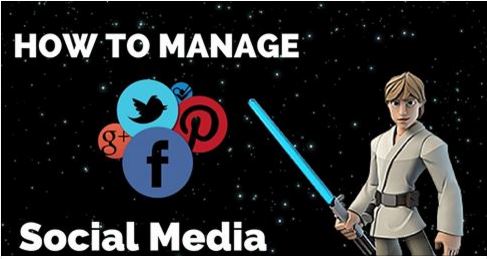
Social Media Crisis Management: 5 Tips To Save Your Brand
Social Media Crisis Management: 5 Tips To Save Your Brand is an article I wrote and first published at AgoraPulse – The Social Media Management Experts.
Whether your next public relations crisis is an embarrassing faux pas, a product recall, or a devastating disaster, this event has the potential to damage the reputation of your brand.
While public perception of your brand and the nature of the incident will play a role in the seriousness of the crisis, the way you handle the event on social media channels will very much determine how quickly the event blows over — and how well your brand survives it.
The mistakes in dealing with a negative event on social can be reduced dramatically with solid social media crisis management. Here are ground rules your business should have — just in case.
#1 Have a Plan
Experience tells me to expect the unexpected, At 3am, when a PR disaster arises, you need to be ready.
Time is precious during a PR crisis so having a plan in place can really help you.
A decision framework for a social media crisis plan:
- Who the decision makers will be
- Who will implement the updates
- Which communication channels you will use
- What to do if key players are away
- A plan to speed up creative processes
- An “out of office hours” emergency plan
Of course, you’ll probably never need a PR crisis plan… but you might!
#2 Get Your Facts Straight
First things first… gather your troops and get your facts straight: take your time to get the full story. What happened? Why? What next? What will you say?
Be sure that everyone handling the PR emergency is present and fully understands what’s happening because you don’t want miscommunication on your channels. I’m a huge fan of employee advocacy through social media but in a PR crisis your employees need to steer clear of debates on social media. Be sure that they understand you are handling it and that they do not need to jump to the rescue.
Agree a timescale for implementation for the following digital actions:
- Customer email blast
- Social media updates
- Website changes
- Third party press releases
- Update banner / online ads
#3 Pause All Scheduled Posts
The worst thing that can happen in a social media crisis is for your prescheduled posts to continue. For example, if you have scheduled a post that says “Happy #ThrowbackThursday have a beautiful day”and your product has just caused a serious injury or death then you are not going to come off well at all! 
Remember when Joan Rivers’ scheduled posts started promoting the new iPhone6 after she had died.
Don’t let that happen to you.
Make sure you pause all updates until you are sure that the crisis is averted. After the crisis passes, determine if your old scheduled posts are longer relevant to post.
#4 Respond Quickly & Correctly
Quickly
The most important thing you can do is to respond quickly. The first 24 hours are crucial because people are waiting for a response from your brand. The longer you wait, the worse it is and the more the online rumour mill will kick into gear.
This was a lesson learnt by Domino’s Pizza in 2009 when an employee posted a Dirty Domino’s video violating all kinds of health codes while making pizza. The video got well over a million hits but the CEO’s apology did not appear for 48 hours.
It was a great apology but it came too late to save the scandal.
Correctly
Social media today is high speed and complex which can send some social media managers into a meltdown. Respond quickly but keep calm! You must always be polite in your responses. If you cannot be polite then don’t respond… it’s that simple. Other big “no nos” during a social media crisis include:
- Deleting critical comments
- Blocking anyone who disagrees with you
- Arguing on threads
- Providing personal opinions
- Losing your ‘brand voice’
If you need an example of “all of the above” check out Applebee’s online meltdown in 2013.
Make one well thought out statement on your chosen social media page and then leave it. If you add comments to a rapidly expanding thread, they will not be seen by your followers and will just encourage argumentative trolls.
If you see that a question is consistently being asked or you have an update then you should address it with a fresh status update.
#5 Monitor Your Brand
Lastly, you need to keep your finger on the pulse and monitor your online PR. You should be doing this anyway. If you’re not, then a PR crisis is definitely the time to start.
- Have the media picked up on your crisis and to what extent?
- What’s the public sentiment? For or against you?
- How many people are talking about this?
- What are people saying about you? Are their comments true?
Listening to your audience is essential because your next move will depend on their sentiment towards you. Trying to search for mentions across all social, forum and web channels, however, may seem monumental. Depending on the size of your brand you may need to engage a PR agency to assist you with monitoring chatter.
If hiring a PR firm is out of reach, there are tools available to help you. For example, on Agorapulse, your inbox collects hashtags, keywords, and mentions on Facebook, Twitter, and Instagram. Tools like this make it super easy to see what people are saying and where they are saying it so you can respond quickly.

Have you ever handled a PR crisis? Tweet me @Charli_Says and let me know!


